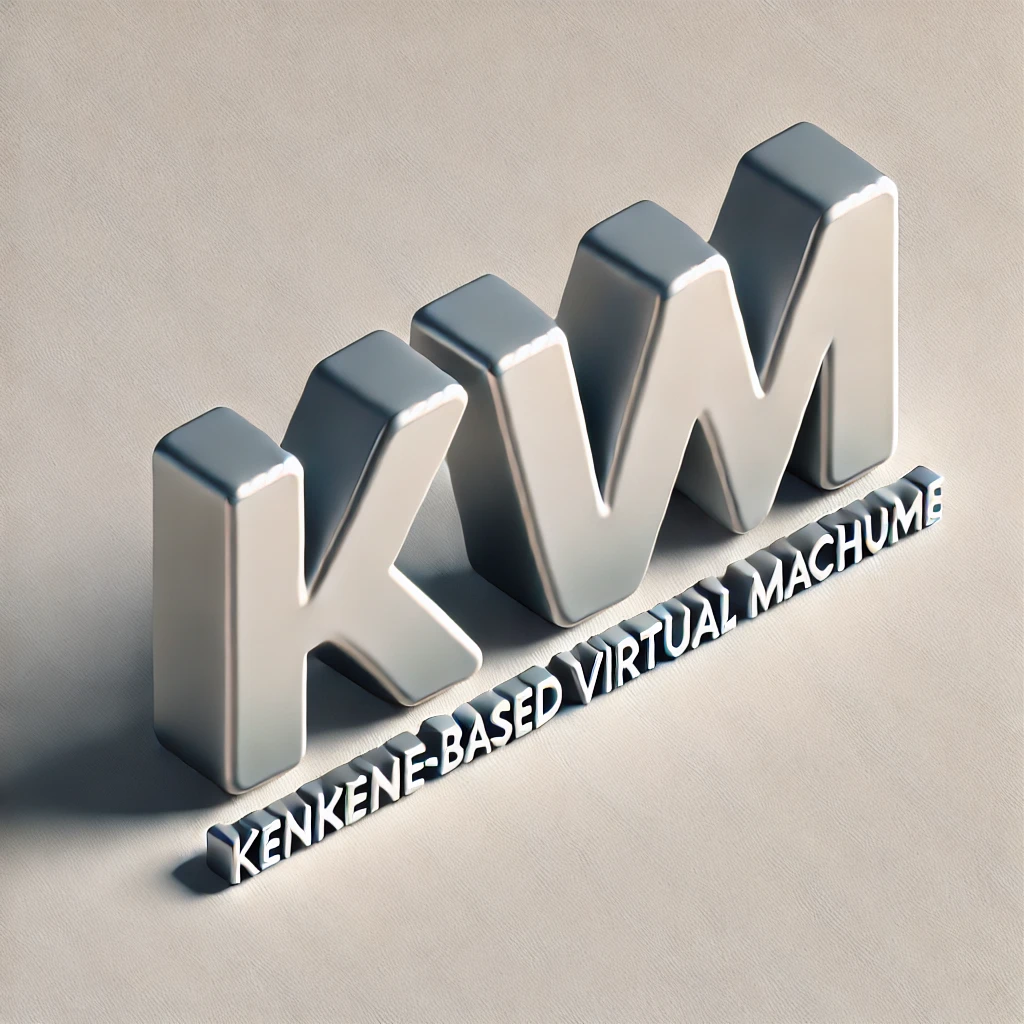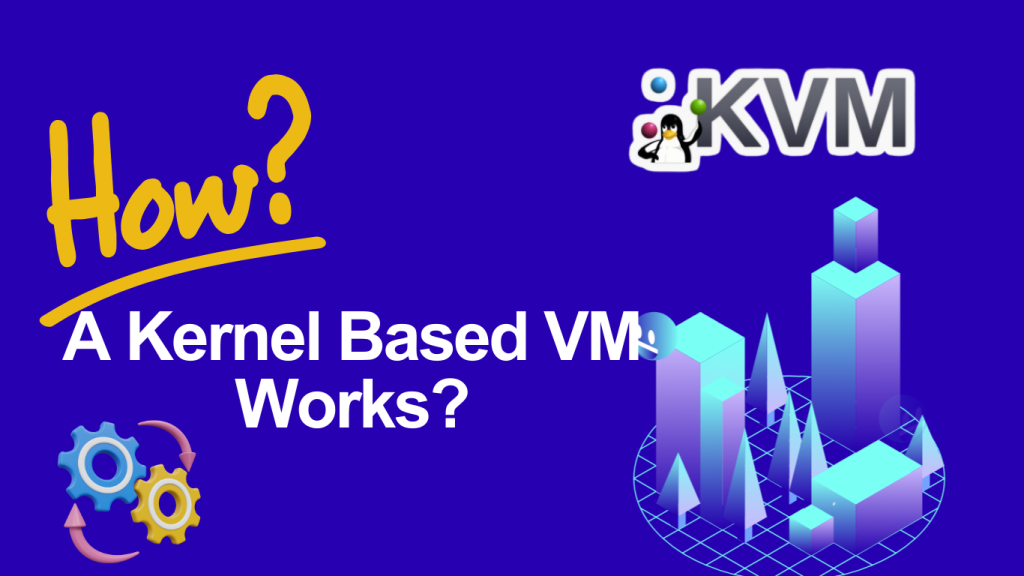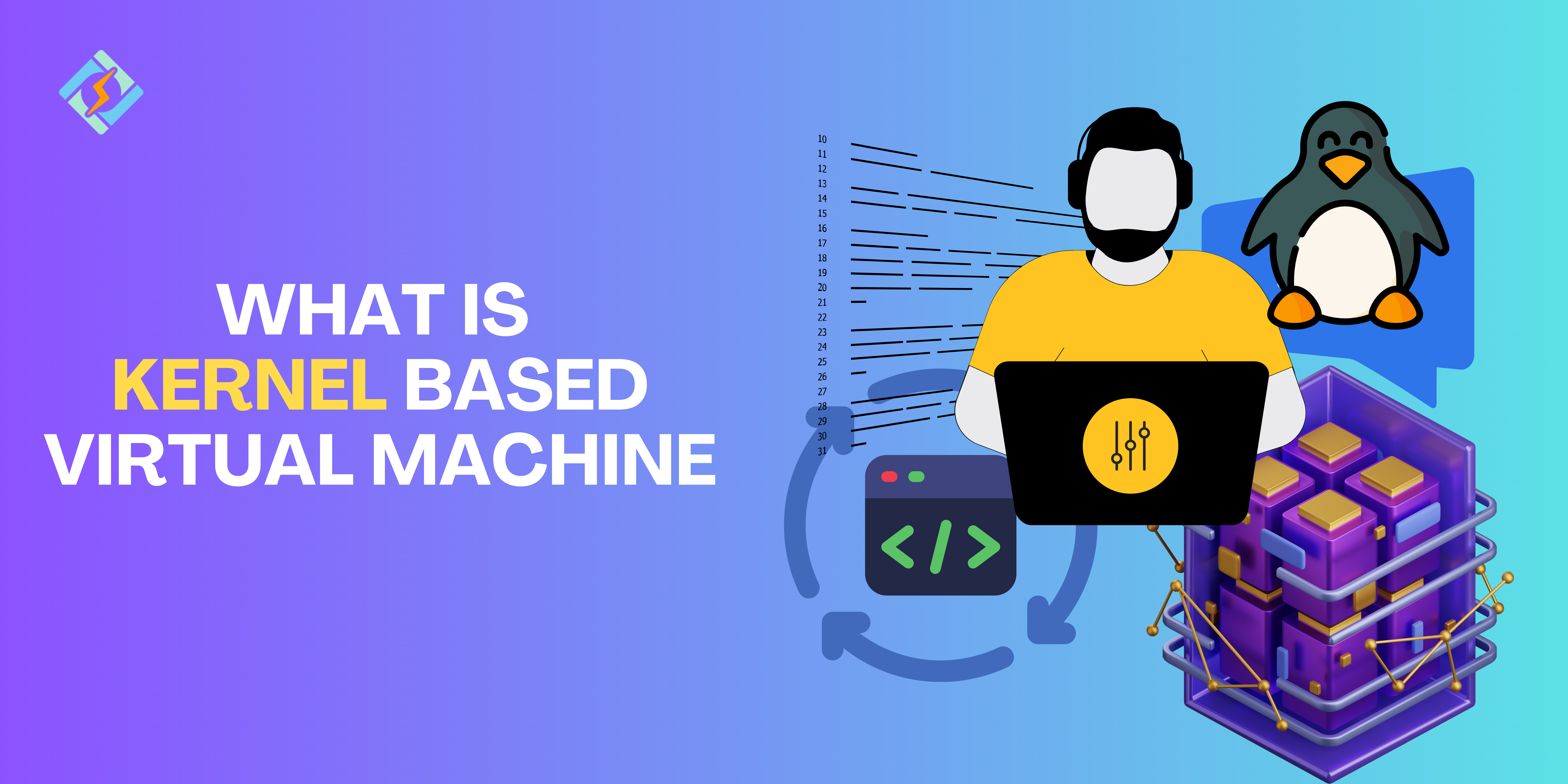Knowing Kernel Based Virtual Machines (KVM) becomes vital as growing businesses use virtualization and the cloud. KVM is an open-source virtualization technology that is quite strong and has been gaining popularity due to its flexibility, scalability, and interaction with Linux. Regardless of your role—developer, system administrator, or IT manager—this article will walk you through KVM’s basics and explain why it can be the ideal option for your virtualization requirements.
Let’s break it down, one step at a time.
What is Kernel Based Virtual Machine (KVM)?
Alright, the basics first! Understanding what is KVM (Kernel Based Virtual Machine)?

One type of virtualization technology that is installed directly into the Linux kernel is known as KVM (Kernel Based Virtual Machine). KVM allows you to set up virtual machines on real Linux computers. To set up virtual machines, you can install them on real Linux computers.
A software program that operates as a separate computer inside of another real computer is a virtual machine. It is shared by the physical machine with resources including memory, CPU cycles, and network bandwidth. A component of the Linux operating system called KVM offers native support for virtual machines on the platform. Since 2007, it has been available through Linux distributions.
To put it another way, visualize KVM as the magic that allows VMs to be created and run their operating systems independently within physical PCs. Like having multiple machines in one!
Get exclusive access to all things tech-savvy, and be the first to receive
the latest updates directly in your inbox.
What Makes KVM Kernel Based Virtual Machine Important?
There are so many benefits of using KVM Kernel base virtual machines such as the following most crucial:
- Storage
- Security
- Performance
- Live Migration
- Hardware Support
- Memory Management
- Scheduling and Resource Control
- Lower Latency and Higher Prioritization
We made a detailed table for you so you can get a clear understanding of what is making KVM so important in the IT field today:
| Key Aspect | Importance |
| Performance | KVM uses hardware-assisted virtualization and resources to achieve near-native performance, excelling in demanding enterprise and HPC environments. |
| Compatibility | a versatile platform that supports Linux, Windows, and Unix-like systems, making it suitable for diverse workloads across various hardware platforms. |
| Flexibility | KVM provides efficient management of virtual environments, utilizing CPU configurations and tools like virt-manager and virsh for centralized automation and monitoring of virtual systems. |
| Cost-effectiveness | As an open-source virtualization platform integrated into the Linux kernel, KVM is free to use with no licensing fees. -ongoing community support and updates reduce costs while avoiding vendor lock-in. |
| Security | Virtual machines on KVM benefit from native security features like SELinux, ensuring strict adherence to security boundaries for enhanced data privacy and governance. |
| Stability | KVM has a mature, stable foundation with over a decade of use in business applications. It enjoys strong support from a vibrant open-source community, making it highly reliable for enterprise-level applications. |
How Does a KVM- Kernel Based Virtual Machine Work: A Technical Breakdown!

Here’s where we get a little technical, but not to scare you away we’re only here to make it simple for you! So basically how a KVM kernel based virtual machine works is that it supports full virtualization.
Use the hardware virtualization extensions of your CPU, like AMD-V or Intel VT-x, to build virtual environments that make it compatible with various guest systems.
Following installation, KVM transforms the Linux kernel into a Type-1 hypervisor, which means it can run directly on your hardware without the requirement for a separate software layer. When it comes to performance, this provides KVM an advantage over alternative virtualization systems.
What’s really cool about KVM is that every virtual machine has its memory and virtualized hardware, just like any other Linux process. KVM therefore makes it feasible to run Linux, Windows, or even BSD in a virtual machine.
Directly uses the host’s resources, making it ideal for demanding workloads. Additionally, management tools such as virt-manager and virsh simplify VM control, making it very efficient.
Kernel Based Virtual Machine vs Other Virtualization Solutions: Why Choose KVM?
If you’re confused about why choose KVM over another VMware or Hyper-V, here’s the deal:
KVM Kernel Based Virtual Machine vs VMware
Here’s a breakdown of 7 key differences between KVM ( Kernel Based Virtual Machine) and VMware:
1. Architecture

VMware: provides type-1 (ESXi) and type-2 (Workstation, Fusion) hypervisors,
KVM: is a type-1 hypervisor built right into the Linux kernel. The Linux distributions’ incorporation of KVM offers benefits in terms of resource efficiency and performance.
2. Background and Administration
VMware: A for-profit product that provides centralized management of vSphere environments through a proprietary management interface called Center.
KVM: An open-source project that is part of the Linux kernel and is controlled through graphical or command-line tools such as Virtual Machine Manager or oVirt.
3. Performance
VMware: An improved and more advanced virtualization technology that offers a marginally better performance. KVM: Constantly advancing via engaged community building, offering competitive performance for the majority of workloads.
4. Cost and Licensing
VMware: Offers a limitedtime free version (ESXi) with limited functionality, but requires large licensing payments. Professional assistance is offered for a fee.
KVM: No license costs, free and open-source software. There are alternatives for both paid help from third parties and community support.
5. Support for Guest OS and Compatibility
VMware: Offers extensive support for a variety of guest operating systems, such as Windows, Linux, Solaris, and macOS (with modifications).
KVM: Although VMware offers more comprehensive OS compatibility, KVM natively supports Windows, all Linux distributions, and certain Unix-like systems.
6. Networking
VMware: This software simplifies business networking configuration by providing sophisticated networking features like distributed switches.
KVM: depends on the Linux kernel’s networking capabilities, which are strong but may require more technical know-how to configure.
7. Safety
VMware: Provides complex security features including firewall settings, secure boot, and virtual machine encryption.
KVM: Has robust security but requires correct configuration, it leverages Linux kernel security (SELinux, AppArmor).
How to Make the Right Choice
The reason I broke down the comparison of a kvm Kernel Based Virtual machine and VMware virtualization features is to help you make the right choice, based on the above features and the following 4 aspects:
1. Organizational Needs
KVM works well in environments with tight budgets, while VMware is best suited for large, complicated enterprises.
2. Ease of Use
KVM has strong command-line tools but requires more technical knowledge, whereas VMware has a more intuitive interface.
3. Cost
KVM is free but can need extra spending on hardware, support, and training; VMware is commercial and pricey.
VMware has outstanding compatibility with a wide range of hardware and third-party solutions, whereas KVM easily integrates with Linux environments.
4. Support
Although KVM depends on community assistance, third-party paid options are available, and VMware provides paid professional help.
KVM in Cloud Computing: Why Leading Providers Trust Kernel Based Virtual Machines
It’s simple to picture enormous data centers operating advanced machinery in the background when we consider cloud giants like IBM, AWS and Google Cloud. Perhaps surprisingly, though, the KVM Kernel based Virtual Machine, is one of the main technologies driving their cloud infrastructure helping them deliver fast, efficient, and secure virtual environments to millions of users. What is KVM, then, and why is it used by some of the largest cloud service providers?
In the context of cloud computing, virtualization is crucial. It is a process that allows a computer to share its hardware resources with multiple digitally separated environments so users typically share data stored in cloud computing environments, like applications, and also share infrastructure thanks to virtualization.
How KVM is Used by AWS and Google Cloud for Virtualization
Let’s look at how and why top cloud providers choose KVM as their virtualization option.
The Nitro Hypervisor and AWS
- Effective Resource Utilization: Based on KVM, AWS’s Nitro Hypervisor helps Amazon make better use of hardware and lets you get the most out of your cloud instances.
- High Performance: By reducing overhead with KVM, AWS makes sure that workloads operate as quickly as they would on physical machines.
- Robust Security: Virtual machines are segregated, safeguarding data and avoiding vulnerabilities thanks to KVM’s interaction with Linux security features.
Compute Engine and Google Cloud:
- Scalable and adaptable: Google’s Compute Engine runs on KVM, which makes it possible for them to easily handle anything from modest initiatives to enormous enterprise workloads.
- Tailored for Speed: To deliver an exceptional user experience, Google has fine-tuned KVM to guarantee quick startup times, low latency networking, and high throughput.
- Security at the Core: Google uses KVM’s integrated Linux security features to guarantee the security and dependability of its cloud platform.
Why Cloud Providers Choose Kernel Based Virtual Machines
AWS, Google Cloud, and other providers use KVM primarily for the following reasons:
Performance: KVM is perfect for applications requiring a lot of resources because of its close hardware interaction, which guarantees that virtual machines (VMs) operate almost as well as they would on physical machines.
Cost-Efficiency: Because KVM is open-source and doesn’t require expensive license, cloud providers can grow while keeping expenses under control.
Flexibility: KVM is ideal for a variety of workloads due to its incredible adaptability, which allows it to accommodate a broad range of guest operating systems and hardware configurations.
Security: KVM is a reliable option for cloud environments since it has strong isolation and data protection thanks to integrated Linux security features like SELinux. While sharing a physical server, virtual servers can be set up to be private and protected from one another.
Setting Up KVM ( Kernel Based Virtual Machine): Step-by-Step Guide
Now let’s put our abilities to work! It is quite simple to set up KVM. Here’s a quick simple guide to give you an overview to help you get started, for an in-depth detailed KVM setup guide stay tuned to check out our next blog!
1. First Step: Install KVM and Required Packages
Open your terminal and run the following command:
sudo apt-get install qemu-kvm libvirt-daemon-system libvirt-clients bridge-utils virt-manager2. Verify KVM Installation:
Check if your system supports KVM with this command:
egrep -c ‘(vmx|svm)’ /proc/cpuinfo
Hardware virtualization is not supported by your CPU if the output is 0.
Setup a Virtual Machine:
To create your first virtual machine, open Virt-Manager, a GUI application for KVM, and follow the instructions. It will allow you to assign resources such as CPU, RAM, and storage.
It is that simple! You are now prepared to use a Kernel based virtual machine for your virtualization requirements after completing these steps.
Best Tools for Managing and Monitoring KVM Environments
Kernel based virtual machine system management is made simple because of several tools, mentioning some of them in the table below, but for more options, go to this official KVM Website resource has more than 20 KVM managing monitoring tools mentioned.
| Name (URL) | How it Manages KVM | License |
| Kimchi | Open-source online interface for managing KVM virtual machines, based on HTML5. It offers an easy-to-use interface for constructing, administering, and monitoring virtual machines, perfect for light management needs. | LGPL,Apache License v2 |
| oVirt | Open source, the oVirt Node hosts virtual machines using the libvirt service, while the oVirt Server manages a powerful virtual machine management software stack. | Apache License v2 |
| Virsh | For expert users, the Libvirt suite provides a command-line interface for managing virtual machines (VMs), giving them complete control over starting, stopping, creating, and deleting them. | LGPL |
| OpenNode | Offering KVM+OpenVZ host, standard libvirt, func management interfaces, cli tools, OpenNode Management Server, and RPC-JSON API interface, this open-source server virtualization and administration solution for RHEL/CentOS is available. | Unknown |
The Future of KVM: What to Expect in Virtualization
We explored through this article what is the KVM kernel based virtual machine, compared with VMware on basis of its features, told you monitoring tools, and overall how it has established itself as a powerful virtualization solution, Widely used by the biggest and most well-known cloud providers, such as AWS and Google Cloud, KVM kernel based virtual machine has many benefits and remains the preferred option for companies of all sizes.
In the future, Kernel VMs will develop more in teams with developments in edge computing, cloud computing, and containerization, so we may anticipate even more breakthroughs. The fact that KVM can provide scalable, safe, and effective virtualization will only increase in value as more businesses adopt hybrid and multi-cloud setups.
The future of KVM is bright, now is the time to learn and get equipped with this virtualization solution to make smart informed decisions when starting out or improving your existing virtualization infrastructure, staying ahead of the curve will keep your business at the forefront of innovation.
FAQ’s -Kernel Based Virtual Machine (KVM) Explained
In terms of virtualization, what is the kernel based virtual machine?
Multiple virtual machines can be efficiently operated on a single physical host thanks to an open-source virtualization technology called KVM (Kernel-based Virtual Machine), which is integrated into the Linux kernel.
1. Why is KVM (Kernel Based Virtual Machine) Used?
It is possible to run different operating systems on the same hardware by using KVM to create and manage virtual machines. It is frequently utilized for server consolidation, cloud infrastructure, and the effective operation of isolated applications.
2. Which is better, VMware or KVM?
An affordable, open-source substitute for VMware is KVM. Although they both have strong performance, VMware costs more and has more sophisticated features than KVM, which is extremely configurable and free.
3. How is hardware-assisted virtualization accomplished by KVM?
KVM allows virtual machines to directly access physical hardware for improved performance through the use of the AMD-V and Intel VT-x extensions.
4. Can virtual machines run Linux and Windows with KVM?
Yes, KVM is compatible with a number of guest operating systems, such as Linux and Windows.
5. What benefits does KVM offer?
Because KVM integrates the Linux kernel, it provides robust security, great performance, cost-effectiveness as an open-source solution, and configurable flexibility.
6. Top Kernel based Virtual Machine monitoring tools available?
Tools like as virt-manager, virsh, and oVirt, which offer GUI and command-line control, can be used to manage KVM.



